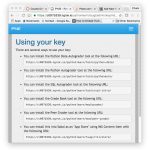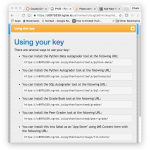I wrote this code to answer some PHP Object Oriented questions during office hours.
function plus($x, $y) {
return $x + $y;
}
class Thing {
public $value;
private $a;
protected $b;
function __construct($start=0) {
echo("Construct\n");
var_dump($this->value);
$this->value = $start;
$value = 12345;
var_dump($this->value);
echo("Done\n");
}
public static function add($x, $y) {
// Cannot use $this
echo("Adding $x $y \n");
return $x + $y;
}
public function increment($x) {
$this->value += $x;
echo("New:" . $this->value . "\n");
}
public function inc2($x, $y) {
$this->increment($x);
$this->increment($y);
}
public function add10() {
$this->value = self::add($this->value, 10);
$this->value = $this->add($this->value, 10);
$this->inc2();
}
function __destruct() {
echo("AAAAAAAAAAAAAARGH!!\n");
}
}
$y = plus(3,4);
$y = Thing::add(3,4);
$z = new Thing(7);
$a = new Thing(10);
$z->increment(4);
$a->increment(5);
$y = $z->add(5,6);
unset($z);
echo("The last line\n");


